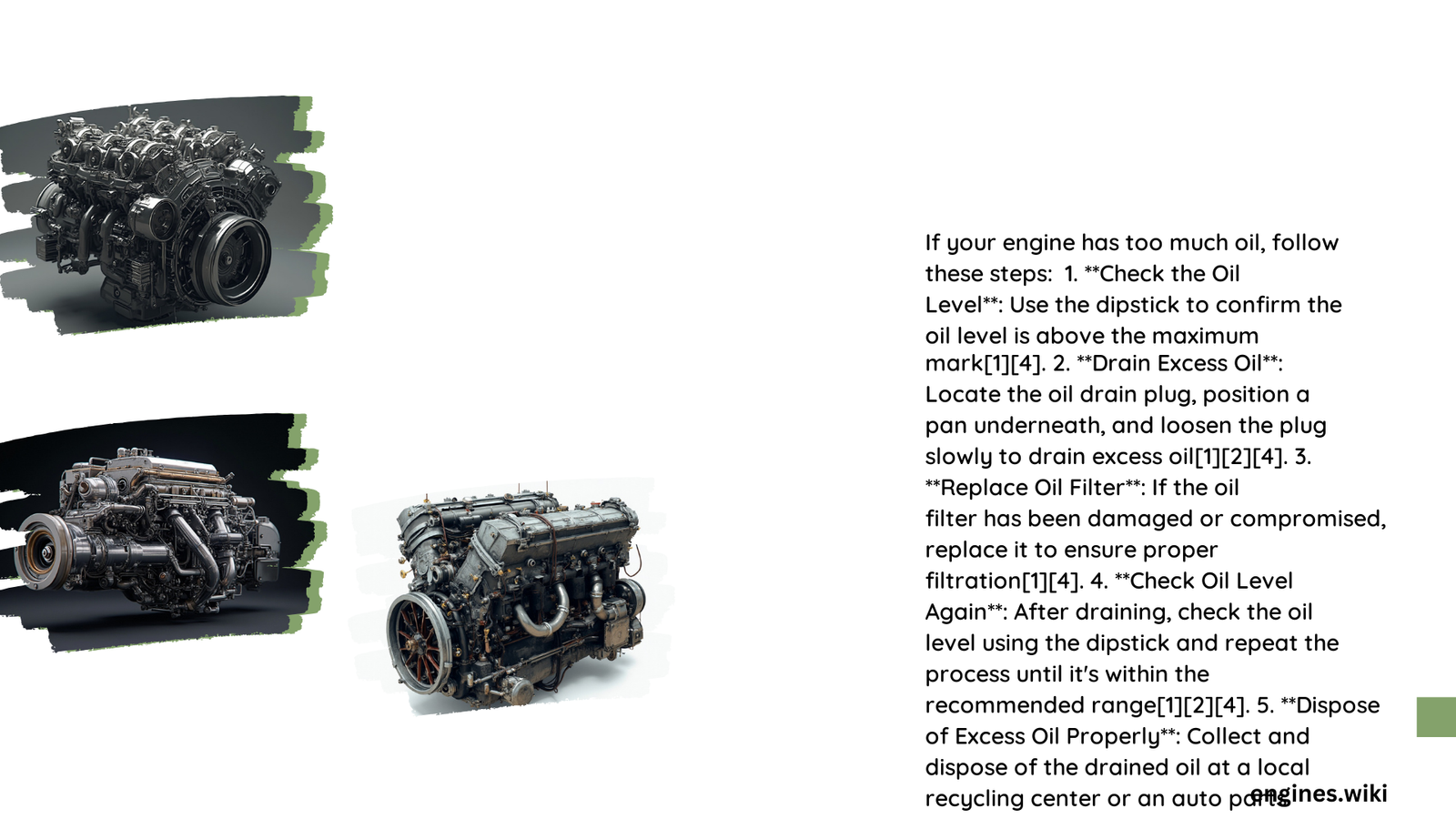What to Do If Engine Has Too Much Oil: Expert Diagnostic and Resolution Guide
Quick Overview
Discovering excess oil in your vehicle’s engine can be alarming, potentially causing significant mechanical damage. Overfilled engine oil creates dangerous scenarios like increased internal pressure, potential seal failures, and compromised lubrication efficiency. Understanding precise diagnostic techniques and immediate corrective actions is crucial to preventing costly engine repairs and maintaining optimal vehicle performance.
Why Does Engine Oil Overfilling Occur?
| Common Causes | Explanation |
|---|---|
| Incorrect Filling | Mistakenly adding too much oil during routine maintenance |
| Inexperienced Mechanics | Errors during professional oil change services |
| Faulty Oil Measurement | Using incorrect dipstick reading techniques |
What Are the Initial Warning Signs?
When your engine has excessive oil, several critical symptoms emerge:
- Check Engine Light Activation
- Unusual Exhaust Smoke
- Unexpected Engine Noises
- Performance Degradation
How Can You Accurately Measure Excess Oil?
Precise Dipstick Measurement Technique
- Park Vehicle on Level Surface
- Wait 15 Minutes After Engine Shutdown
- Clean Dipstick Thoroughly
- Reinsert and Check Oil Level
- Compare Against Manufacturer Markings
What Immediate Steps Should You Take?
Drain Excess Oil Procedure
- Gather Required Tools
- Oil drain pan
- Wrench
- Protective gloves
-
Jack stands (optional)
-
Warm Engine Slightly
- Drive vehicle for 5-10 minutes
-
Allow oil to become more fluid
-
Locate Drain Plug
- Position drain pan underneath
-
Remove plug carefully
-
Drain Precise Amount
- Remove oil incrementally
- Recheck dipstick frequently
What Potential Risks Exist?
Overfilled engine oil can cause:
- Catastrophic Engine Damage
- Increased Internal Friction
- Potential Seal Degradation
- Reduced Lubrication Efficiency
Professional Recommendations
| Action | Recommendation |
|---|---|
| Regular Checks | Verify oil levels monthly |
| Professional Inspection | Annual comprehensive engine evaluation |
| Maintenance Log | Track oil change details meticulously |
Critical Prevention Strategies
- Use Correct Oil Grade
- Follow Manufacturer Guidelines
- Invest in Quality Oil Filters
- Learn Proper Measurement Techniques
When to Seek Professional Help?
If you’re uncertain about:
– Exact oil removal process
– Potential engine damage
– Complex diagnostic requirements
Technical Insights
Excess oil creates hydraulic resistance, potentially causing:
– Increased crankshaft drag
– Reduced engine efficiency
– Higher operational temperatures
Final Recommendations
- Stay calm and methodical
- Use precise measurement techniques
- Remove excess oil carefully
- Monitor engine performance post-correction
Reference:
- Shield Oils – Engine Oil Management
- J.D. Power – Automotive Maintenance
- Mercedes-Benz Technical Guidelines
Disclaimer: Always consult professional mechanics for complex automotive issues.

